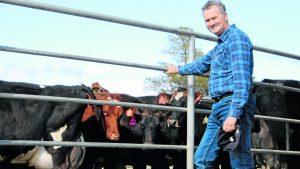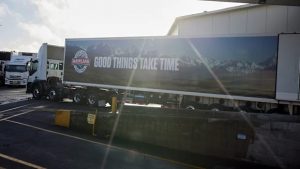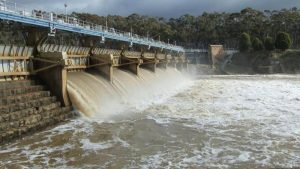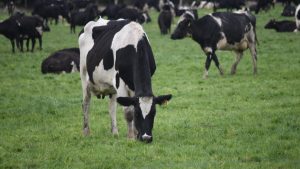
Wogamia’s Daniel Cochrane is currently milking 450 cows.
He says milk production is down by approximately 20 per cent.
Between 350-380mm of rain has fallen on the property located on the Shoalhaven River since the skies broke open on Friday.
“For us farmers here in the Shoalhaven, it’s the second time in three months that we’ve had water up over the farms, and the river is still rising now,” he said.
“Many farms had just dried out enough to sow winter and spring feed, and now it’s all under water.”
Daniel said the weather was taking a toll on farmers’ mental health.
“I’m not sure how much more some people will be able to take,” he said.
“It’s not necessarily financially, but mentally.”
According to the Bureau of Meteorology, Nowra received 366mm, Kangaroo Valley 454mm, Robertson 562mm, Albion Park 477mm, Moss Vale 333mm and Kiama 429mm in the seven days to Wednesday, July 6.
While further north, Camden received 390mm.
Major flooding occurred along the Upper Nepean River at Menangle Bridge, which peaked at 16.61 metres on Sunday morning.
Major flooding is occurring along the Hawkesbury River at North Richmond where river levels peaked at 14.18m early Monday morning, followed by a second peak of 14.19m on Monday evening.
The Upper Nepean River at Menangle Bridge peaked at 16.61 metres around 07:50 am Sunday with major flooding.
The Hawkesbury River at North Richmond (WPS) peaked at 14.18 metres around 03:15 am Monday. Renewed rises were observed overnight Monday with a second peak of 14.19 metres around midnight Monday.
Pyree’s Tracey Russell described the situation as heartbreaking.
“We worked so hard to get the seed in the ground, and now it is all under water again,” she said.
“What little we did have has flown out the window.”
Tracey will be forced to run nearly 1000 cows on just 5 hectares of land.
“Our cows spent that time here for the last three months following the last flood,” she said.
“It’s devastating. The cows ended up getting so sick with mastitis and sore feet, and they had nowhere to lay down. That was the biggest problem.
“They are freezing; they are really suffering. We’ve just got to keep the feed up to them; that’s all we can do.
“I don’t know what we are going to do this time.
“We have got some woodchip in to build a mound for them to be able to lay down.”
Jim Hindmarsh & Son Nowra manager Jim Hindmarsh said a cattle supply shortage was inevitable.
“Last week, there was a severe drop in the restocker and feedlot markets, the meat market held its ground, but due to the wet weather, the supply has been taken out of the game,” he said.
“There’s going to be a shortage overall going to the processors.”
Mr Hindmarsh had hoped the rain would steady on Monday, but it had not abated.
“This will have a major impact on farmers; with 300mm of rain, people won’t be able to move cattle,” he said.
“Thankfully, they were able to clear off cattle in the last few weeks before the rain hit.”
Mr Hindmarsh was forced to call off Camden’s Tuesday sale.
“The flood water is at the highest level since we have been operating there for 12 years, and a lot of people who have worked there much longer than that have said it was the highest they had ever seen,” he said.
























